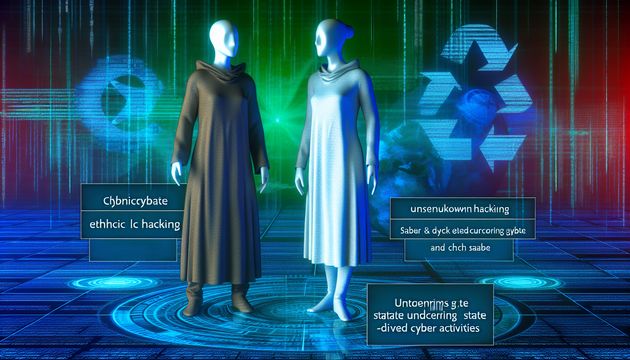
Understanding the Citrix NetScaler Vulnerability CVE-2025-6543: A Threat to Dutch Organizations
The Citrix NetScaler vulnerability, identified as CVE-2025-6543, has emerged as a significant cybersecurity threat, particularly impacting organizations in the Netherlands. This critical flaw, akin to leaving a door unlocked in a secure building, is characterized by a memory overflow bug. This bug allows attackers to execute remote code on unpatched systems, leading to potential breaches of sensitive data. The vulnerability affects NetScaler ADC and Gateway configurations, especially when set up as a Gateway or AAA virtual server. The exploitation of this vulnerability began as a zero-day attack, meaning it was exploited by attackers before the vendor was aware or had a chance to fix it. Threat actors leveraged it as early as May 2025, well before Citrix issued a public advisory and patches in late June 2025. This delay provided attackers with an extended window to exploit the vulnerability, resulting in significant breaches across multiple critical organizations in the Netherlands (BleepingComputer).
Exploitation of Citrix NetScaler Vulnerability CVE-2025-6543 in the Netherlands
Nature and Scope of the Vulnerability
The Citrix NetScaler vulnerability, identified as CVE-2025-6543, is a critical security flaw that has been actively exploited to compromise organizations in the Netherlands. This vulnerability is characterized by a memory overflow bug, which can be thought of as a system receiving more information than it can handle, leading to unintended control flow or a denial of service (DoS) state on affected devices. The flaw impacts NetScaler ADC and NetScaler Gateway configurations, specifically when set up as a Gateway (VPN virtual server, ICA Proxy, CVPN, RDP Proxy) or AAA virtual server. The vulnerability allows attackers to execute remote code on unpatched systems, leading to potential breaches of sensitive organizational data (BleepingComputer).
Timeline of Exploitation
The exploitation of CVE-2025-6543 began as a zero-day attack, with evidence suggesting that the vulnerability was leveraged by threat actors as early as May 2025. This was nearly two months before Citrix issued a public advisory and made patches available on June 25, 2025. The delay in patch availability provided attackers with an extended window to exploit the vulnerability, resulting in significant breaches across multiple critical organizations in the Netherlands (BleepingComputer).
Impact on Dutch Organizations
The exploitation of CVE-2025-6543 has had a profound impact on various organizations within the Netherlands. The National Cyber Security Centre (NCSC) of the Netherlands reported that several critical entities were breached, with attackers successfully executing remote code and subsequently erasing traces of their activities to conceal the intrusions. Notably, the Openbaar Ministerie (OM), the Public Prosecution Service of the Netherlands, was among the affected organizations, experiencing severe operational disruptions. The organization gradually restored its services, including email servers, after receiving an alert from the NCSC (BleepingComputer).
Technical Details and Exploitation Methods
The CVE-2025-6543 vulnerability is primarily exploited through unauthenticated, remote requests that trigger a denial of service condition, causing affected NetScaler appliances to go offline. This flaw impacts several versions of NetScaler ADC and NetScaler Gateway, including versions 14.1 before 14.1-47.46, 13.1 before 13.1-59.19, and NetScaler ADC 13.1-FIPS and NDcPP before 13.1-37.236-FIPS and NDcPP. The vulnerability’s exploitation often involves remote code execution, allowing attackers to gain control over the compromised systems (BleepingComputer).
Mitigation Measures and Recommendations
To mitigate the risks associated with CVE-2025-6543, Citrix has recommended that organizations upgrade to the latest versions of NetScaler ADC and NetScaler Gateway. Specifically, organizations should update to version 14.1-47.46 or later, version 13.1-59.19 or later, and ADC 13.1-FIPS and 13.1-NDcPP version 13.1-37.236 or later. After installing these updates, it is crucial to terminate all active sessions using commands such as kill icaconnection -all, kill pcoipConnection -all, kill aaa session -all, and kill rdp connection -all. Additionally, administrators are advised to clear persistent sessions with the command clear lb persistentSessions (BleepingComputer).
Indicators of Compromise and Threat Hunting
The NCSC has provided guidance on identifying potential indicators of compromise (IOCs) related to the exploitation of CVE-2025-6543. System administrators are encouraged to look for signs such as atypical file creation dates, duplicate file names with different extensions, and the absence of PHP files in certain directories. The NCSC has also released a script on GitHub designed to scan devices for unusual PHP and XHTML files, as well as other IOCs. Organizations are urged to conduct thorough threat hunting exercises to detect any signs of compromise, even if they have already applied the necessary patches (BleepingComputer).
Broader Implications and Future Outlook
The exploitation of CVE-2025-6543 highlights the broader implications of unpatched vulnerabilities in critical infrastructure. The incident underscores the importance of timely patch management and proactive threat detection to mitigate the risks posed by zero-day vulnerabilities. As threat actors continue to exploit such vulnerabilities, organizations must remain vigilant and prioritize cybersecurity measures to protect their systems and sensitive data. The ongoing developments related to CVE-2025-6543 serve as a reminder of the evolving threat landscape and the need for continuous cybersecurity awareness and preparedness (BleepingComputer).
Final Thoughts
The exploitation of CVE-2025-6543 underscores the critical importance of timely patch management and proactive threat detection. As organizations in the Netherlands have experienced, the consequences of unpatched vulnerabilities can be severe, leading to operational disruptions and data breaches. The incident serves as a stark reminder of the evolving threat landscape and the necessity for continuous cybersecurity awareness and preparedness. Organizations must remain vigilant, prioritize cybersecurity measures, and stay informed about emerging threats to protect their systems and sensitive data (BleepingComputer).
References
- BleepingComputer. (2025). Netherlands Citrix NetScaler flaw CVE-2025-6543 exploited to breach orgs. https://www.bleepingcomputer.com/news/security/netherlands-citrix-netscaler-flaw-cve-2025-6543-exploited-to-breach-orgs/
- BleepingComputer. (2025). Citrix warns of NetScaler vulnerability exploited in DoS attacks. https://www.bleepingcomputer.com/news/security/citrix-warns-of-netscaler-vulnerability-exploited-in-dos-attacks/



